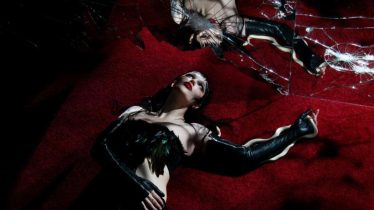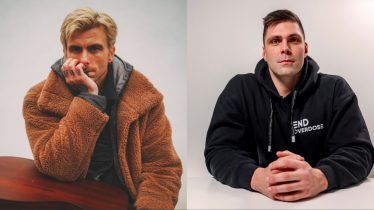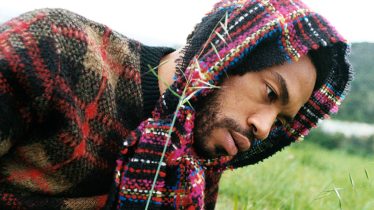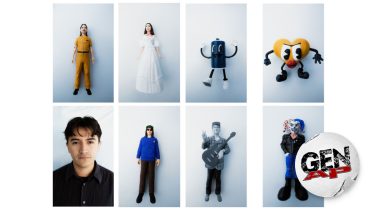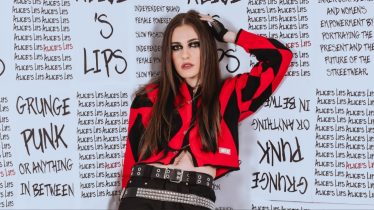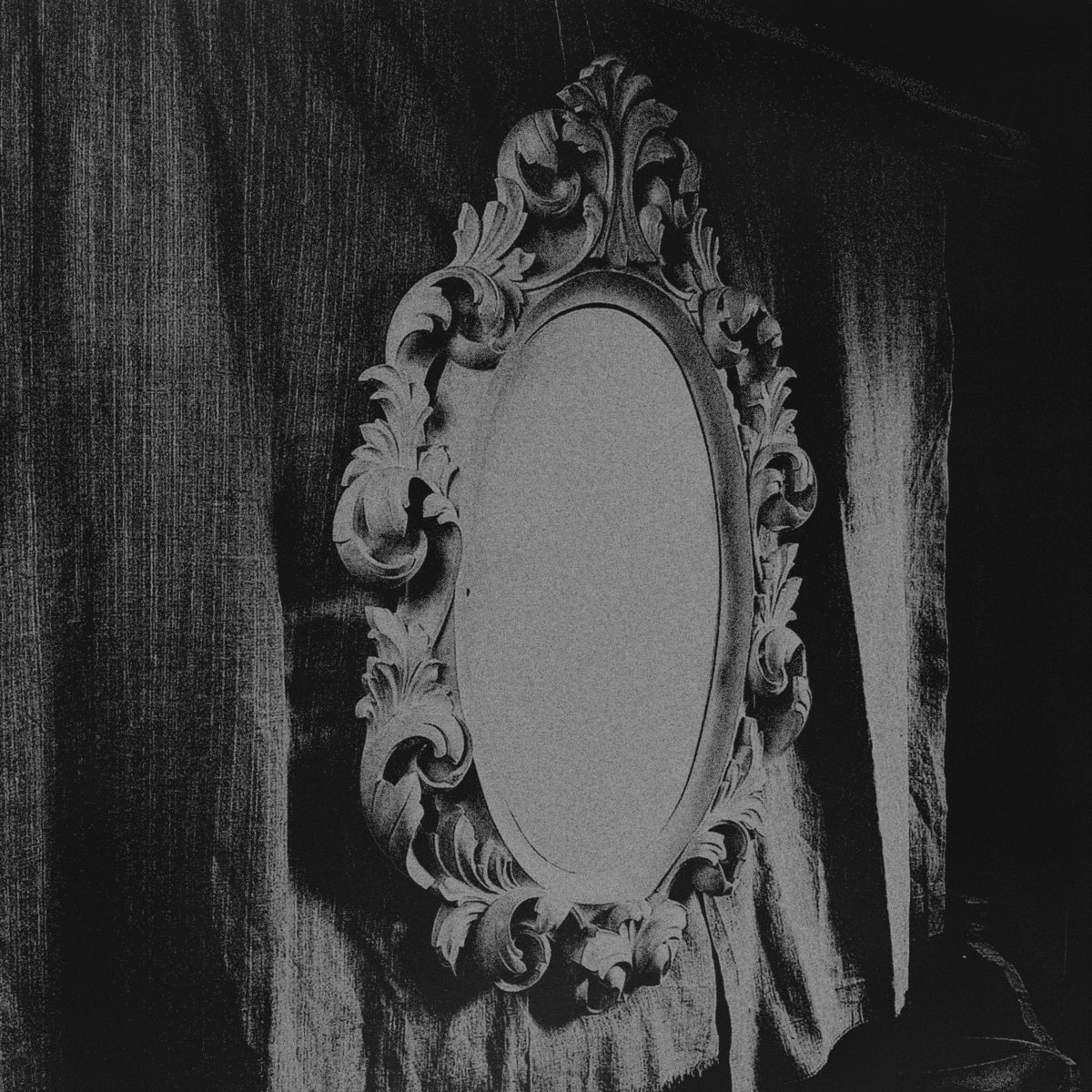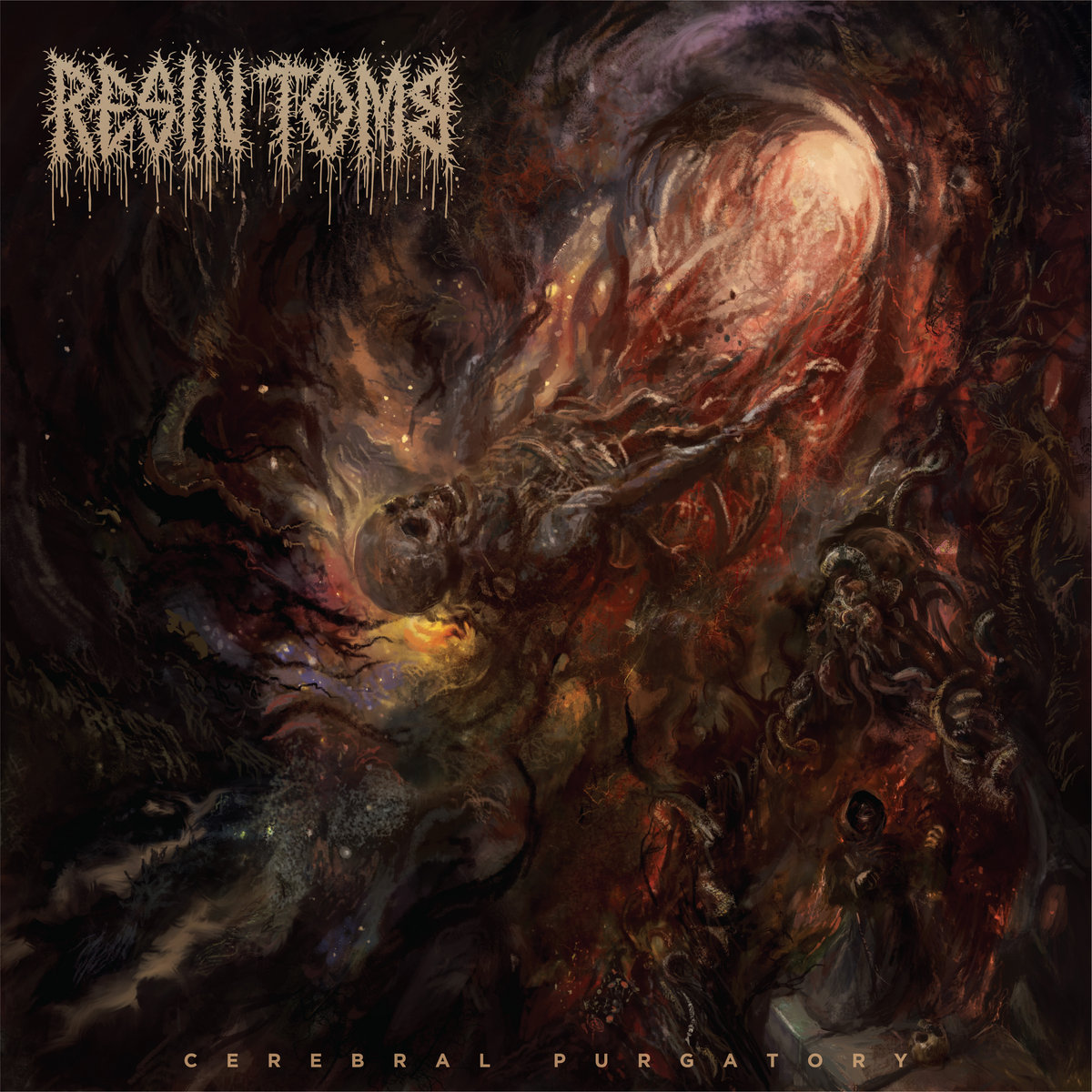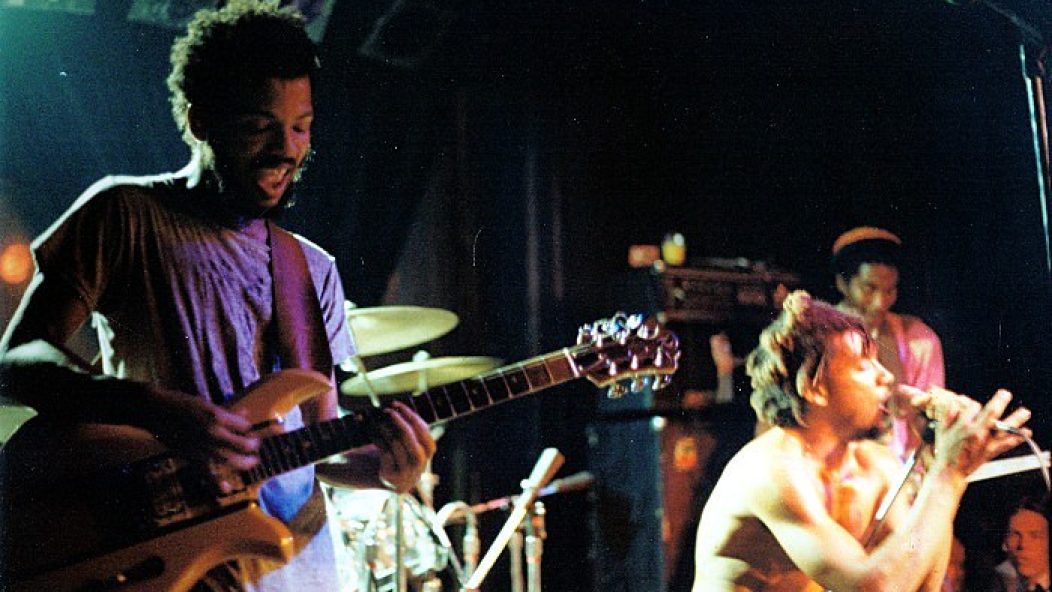
These 10 artists made Washington DC into one of the epicenters of punk
It’s been said in various ways that Washington, D.C. is the least punk town in the world, which perhaps makes it the perfect place for a punk scene. Certainly, the national capital’s first stabs at three-chord ‘70s teenage rebel music might challenge Johnny Ramone or Joe Strummer’s idea of the same.
Among the earliest local outfits were Half Japanese, centered around brothers Jad and David Fair’s homemade recordings, featuring the duo yelling over an untuned electric guitar and a tiny drum kit flogged within an inch of its life. Then you had White Boy, another duo consisting of a middle-aged man in a wig and leisure suit named Mr. Ott, yelling “I could puke!” as his long-haired teenage step-son Jake Whipp played boogie rock Les Paul chords and a harsh, tense guitar break that would’ve likely made Grand Funk’s Mark Farner grin.
Other notable D.C. stabs at a new late ‘70s rock underground included the Slickee Boys, a sprawling, Tubes-like theatrical outfit mutating the offcast detritus of surf music and garage psychedelia,; the similarly garage-surf-y outfit Insect Surfers; and the Nurses, an edgy, tense, low-key angst-rock collective somewhat in the Talking Heads vein. Some of these gangs, and plenty of others, were collected for the :30 Over D.C. compilation by Skip Groff, owner of Yesterday And Today Records.
Read more: These punk records from 2000 led the genre into a brand-new century
Groff and his store became key in local punk’s evolution, not the least because of his Limp Records label, which issued :30. Yesterday And Today was a chief punk/new wave/new music clearing house, accumulating a stock of over 1 million indie and import 45s. It eventually employed local musical luminaries who numbered members of Half Japanese, the Slickee Boys, Minor Threat, Fugazi, Rites Of Spring and many others. He was key in Dischord Records’ gestation, advising Ian MacKaye and Jeff Nelson on the mechanics of making and releasing records: “Here’s where to get your tapes mastered. Here’s where to get them pressed. Here’s where to print the sleeves.”
He pointed them in the direction of recording engineer Don Zientara and his Arlington, Virginia-based Inner Ear Studios, providing another key link in D.C. punk’s chain. Groff went on to produce many of the bands you are about to read about in this article; Zientara’s credits, as either producer or engineer, would include all the same acts, then expanded to many times that number.
Read more: Why Green Day’s 1994 BBC Sessions sound better with a cup of coffee
Georgetown University, with its heavy student population and influential WGTB campus radio station, became a key outlier for local punk rock. So did the Dupont Circle and Adams Morgan districts, both artistic and socially conscious neighborhoods. Art collective Madam’s Organ, at 18th Street NW, began hosting local punk shows as the ‘70s drew to a close. Touring national/international acts—the Damned, the Clash, the Cramps or Ramones—came through town, inspiring local teens such as MacKaye and his friend Henry Garfield (aka Henry Rollins). An all-black local outfit opened for the Damned’s gig became an immediate sensation. Garfield later remarked that they showed him that D.C.’s indigenous bands could blow out-of-towners off the stage.
Please enjoy our custom playlist, Alternative Press presents D.C. Hardcore Essentials, as you read this brief history.
Bad Brains
That band opening for the Damned began life a few years earlier as Mind Power, a jazz-fusion and funk outfit of extraordinary ability. Their friend Sid McCray played them Sex Pistols, Ramones and Dead Boys records, and Bad Brains were born. This is where the story of D.C. hardcore begins. Their intensely developed chops meant they could push tempos beyond human endurance and not lose the plot, being tighter than your dad settling a restaurant bill.
And after a Bob Marley And The Wailers concert changed their lives a second time, they could stop on a dime and play the slowest, deepest dub reggae in their newly Rasta-fied form. Their “Pay To Cum” debut single blew the minds of anyone who heard it—I have written often of how it sounded like you were playing a Sex Pistols 45 at 78 RPM. Bad Brains essentially taught every budding second generation D.C. punk, from MacKaye to Rollins to Brian Baker to John Stabb, how it’s done.
Teen Idles
Teenagers MacKaye and Nelson met after the latter set off a pipe bomb outside their school, then bonded over their love of punk rock. Their band the Slinkees—consisting of MacKaye on bass, Nelson drumming and guitarist Geordie Grindle—evolved into the Teen Idles when singer Mark Sullivan went to college. He was replaced by Nathan Strejcek, but not before the band tried out Garfield and decided he made a better roadie than a frontman.
They soon developed a sound that resembled every non-reggae Bad Brains moment dumped in a Veg-O-Matic set on turbo. A West Coast tour by Greyhound bus brought them in close contact with rising hardcore stars Black Flag, Circle Jerks and Dead Kennedys. Having witnessed slamdancing out west, they brought that back home with them also. Then they recorded with Groff and Zientara at Inner Ear. Tensions between Grindle and Nelson led to the Teen Idles’ death. MacKaye and Nelson took the $600 the band earned in their lifetime to press the Inner Ear sessions as 1980’s Minor Disturbance EP, thus inaugurating Dischord Records.
Read more: My Chemical Romance’s ‘The Black Parade’ was created to stand the test of time
State Of Alert
Garfield didn’t seem too put out by not passing his Teen Idles singing audition. In October 1980, a band called the Extorts lost their vocalist, Lyle Preslar. With Garfield firmly gripping that SM57, guitarist Michael Hampton, bassist Wendel Blow and drummer Simon Jacobsen became State Of Alert, most often simply abbreviated to S.O.A. Their sole in-life release, No Policy, broke the sound barrier, so determined they seemed to be even faster than Teen Idles (who seemed to want to make Bad Brains’ tempos seem more like pouring molasses in winter). For a time, it looked like every successive new harDCore band was determined to best the previous week’s speed trials. S.O.A. hit burnout by July 1981. Not long after, Black Flag tapped Garfield, now self-renamed Henry Rollins, to step up to their mic. A legend was born.
Minor Threat
With Teen Idles gone, MacKaye and Nelson launched Minor Threat with ex-Extorts singer Preslar on guitar and Baker on bass at a December 1980 Bad Brains gig. They immediately impressed D.C. with not just the fastest, tightest thrashing the city had seen yet but also a philosophy MacKaye offered in the lyrics of his song “Straight Edge.” Basically the opposite of Ian Dury’s “Sex & Drugs & Rock & Roll,” it was a chaste, ascetic mindframe some of the band may not have shared.
Across their three years, Minor Threat grew in prominence within the international punk underground. Their music became increasingly dynamic and sophisticated without losing velocity nor power. Which made the musical peak they hit with the Salad Days EP, released two years after their 1983 breakup, feel all the more tragic. MacKaye would eventually form the possibly even more influential Fugazi. He continued to run Dischord with Nelson, while Baker switched back to guitar—his original instrument—and became one of punk’s most valuable players. He has been in Bad Religion since 1994.
Read more: Dave Grohl says Nandi Bushell shows “the true meaning of rock ‘n’ roll”
Black Market Baby
Black Market Baby were considerably older than the mostly teenage D.C. scene and distinguished themselves by what they were not. They were not hardcore—they were a fundamentalist punk-rock band in the 1977 sense of the world, their sky-punching Clash/Sham 69/AC/DC-style rock ‘n’ roll refreshing in its thrashlessness. They were not straight edge—they drank, drugged and brawled without impunity. Singer Boyd Farrell seethed drunken charisma atop guitarist Keith Campbell’s ringing slash chords and bassist Mike Dolfi’s low-end power drive. Such roaring yet downbeat anthems as “Potential Suicide” should have owned the ‘80s the way “Blitzkrieg Bop” or “Sonic Reducer” owned the ‘70s.
Government Issue
They began as your standard regulation D.C. thrash band, their distorted blitzkriegs distinguished by singer Stabb’s sarcastic stage persona. Then guitarist Tom Lyle joined, his massive skyscraper slab-chords taking up several blocks of real estate. As the years went along, Government Issue slowed down and exhibited signs they spent hours and even days listening to the Damned circa The Black Album and even ‘60s psych renegades Love. Stabb’s lyrics shifted to personal concerns. Government Issue evolved into one of the most musically sophisticated punk acts of the ‘80s, virtually peers with national bands such as Hüsker Dü and the Minutemen.
Read more: The 10 best punk drummers of the 1970s displayed great skill and power
Scream
The trajectory of such bands as Government Issue and Scream demonstrate how influential U.K. first-wavers the Damned were in D.C. Just as Dave Vanian, Rat Scabies, Captain Sensible and whoever played bass with ‘em that week evolved from 1976’s Stooges-mania to lashings of prog, psychedelia and proto-goth, so went D.C bands if they lasted longer two years. From Alexandria, Virginia, brothers Franz Stahl on guitar and singer Pete led the quartet through the 275 BPM post-Bad Brains hardcore of the era and were brilliant at it. As the decade crept along, those BPMs got less heart attack-inducing, eventually “mellowing” into a prime hard-rock band. After drummer Kent Stax left following their third album, his replacement—a prodigy named Dave Grohl—started gaining a little attention for his power and skill. Wonder what happened to him?
The Faith
One of two bands that shared a side each of one of Dischord records’ most important releases, the Faith coalesced around the ashes of S.O.A.—guitarist Hampton and late stage drummer Ivor Hanson—and former Untouchables singer Alec MacKaye, brother of Ian. With bassist Chris Bald rounding out the ranks, the band forged a sound matching the explanation MacKaye gave for their name: “We did want something more hopeful and less nihilistic, in spite of our chaotic and sometimes destructive approach to performance.” They were one of the best examples of the D.C. hardcore sound: speedy and aggressive almost to the point of falling apart, yet surprisingly melodic and sincere. Like many here, they were short-lived. But their side of the Faith/Void split and 1983’s eight-song EP Subject To Change serve as a positive example to those seeking to bend speed rock’s boundaries.
Read more: From 1973-1980, San Fransico was one of the great American punk cities
Void
The interracial cast of Void—singer John Weiffenbach, bassist Chris Stover, drummer Sean Finnegan and utterly unhinged lead guitarist Jon “Bubba” Dupree—had a severely truncated recording career: Only their side of the Faith/Void split album was released in their five-year extant. But they were likely one of speed metal’s foundational bands. Blame it on their version of high-test harDCore with Dupree’s sick and twisted guitar work—gibbering clusters of Eddie Van Halen note-iness warped by whammy bar excessiveness into these bizarre, taffy-like runs. It verged on a parody of heavy metal’s six-string histrionics. Proof that music that burns the most energy kills itself off the swiftest.
Rites Of Spring
By 1985, many of harDCore’s leading lights were gone. A new generation of bands were stepping forward under the rubric of Revolution Summer. They all adhered to the Bad Brains’ old Positive Mental Attitude gospel and sought to spice up the 365 MPH thrashfests of 1981 with some newfound musicality. The best of the bunch was Rites Of Spring, who’d clearly made intense study of Faith’s releases to get down that mix of introspective lyrics and ringing hardcore. Good thing latter-day Faith guitarist Eddie Janney was on hand to aid ROS—Janney, singer/guitarist Guy Picciotto, drummer Brendan Canty and bassist Mike Fellows—in their pursuit of the melodic assault.
Fifteen D.C.-area shows and one self-titled LP, and they were gone. Picciotto and Canty would continue refining the essential punk ethos with MacKaye in Fugazi, while Fellows became a respected solo artist. But by amping up hardcore’s sonic violence and visceral passion while throwing out its compositional rulebook, as Picciotto tore his throat to bits emoting his introspective lyrics, Rites Of Spring inspired generations of emo and screamo bands to come. But they were 50,000 leagues better than anything they influenced.
